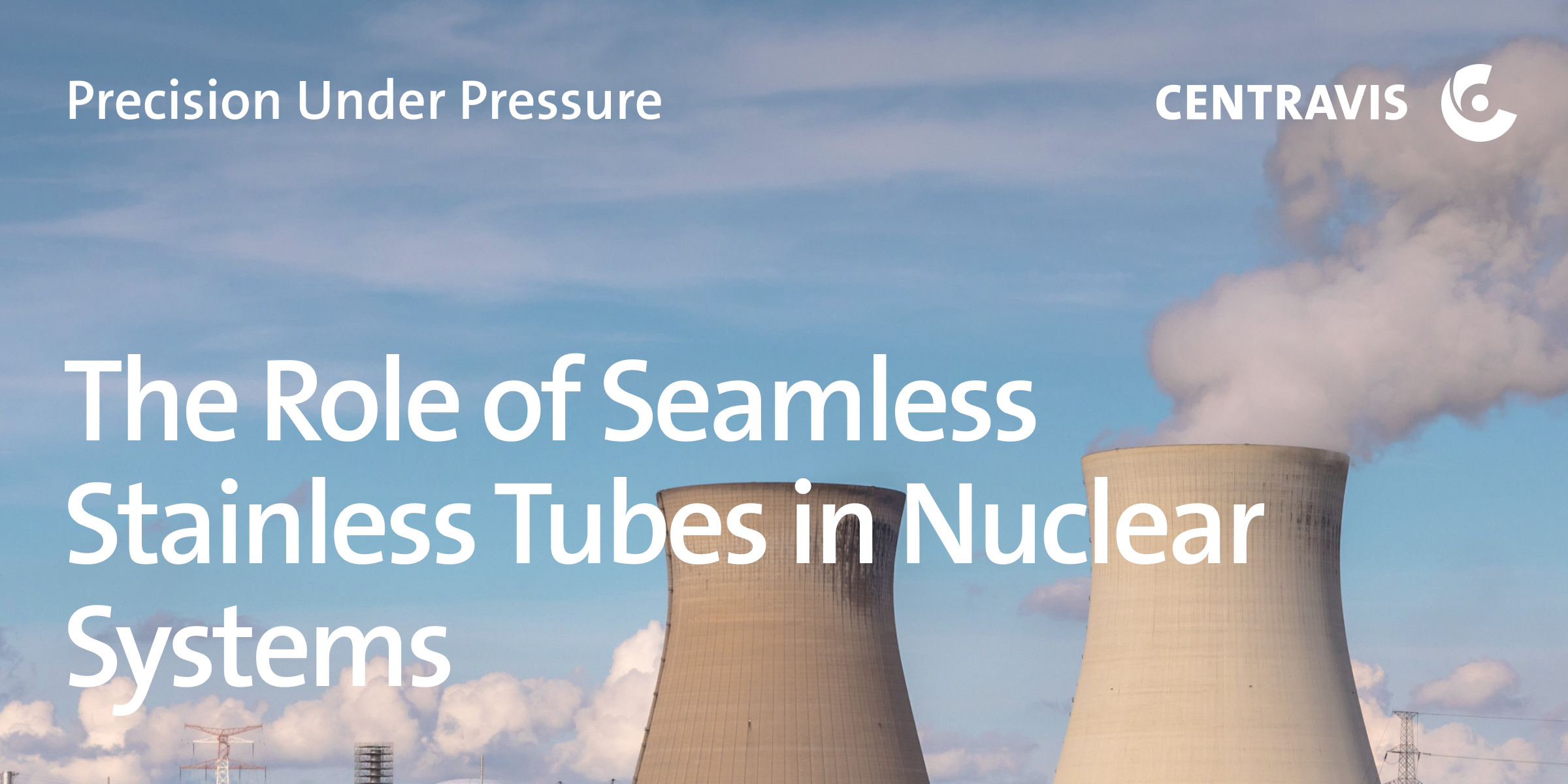
In nuclear energy, where reliability and safety are of paramount importance, seamless stainless steel tubes play a key role in ensuring the stable operation of reactors, heat exchangers, and other critical systems. These components must operate under extreme conditions – high pressure, elevated temperatures, and radiation exposure. As a result, the requirements for tubes & pipes in the nuclear industry are extraordinarily high: zero tolerance for defects, as even the smallest flaw can pose a serious safety risk. This article discusses why the nuclear industry demands pipes with near-zero defect tolerance, how radiation, high pressure, and temperature affect the integrity of pipes, and the material and dimensional requirements according to ASME and RCC-M standards.
Why the Nuclear Industry Demands Zero Defect Tolerance
In nuclear systems, even the smallest defect can have catastrophic consequences. All components that come into contact with radioactive materials or are exposed to high pressure and temperature must be flawless in terms of quality and integrity. Any defect in tubes & pipes can lead to the leakage of radioactive materials or reduced system efficiency, which is unacceptable for safety.
This is why the nuclear industry places a high emphasis on quality control of pipes. To ensure this, pipes undergo rigorous testing. Additionally, high-quality materials are certified, and manufacturers comply with all necessary standards to ensure the pipes’ high reliability and minimize defects that could impact the safety of nuclear installations.
Modern technologies for manufacturing seamless stainless steel pipes include control over microstructure and special heat treatment methods. These are optimal solutions for nuclear systems as they ensure high strength and corrosion resistance, as well as minimal defect levels in the material.
The Impact of Radiation, High Pressure, and Temperature on Pipe Integrity
Tubes & Pipes in the nuclear industry operate under extreme conditions. High pressure and temperature are common factors for such systems, but in addition to this, materials are also negatively affected by radiation.
High Pressure and Temperature
High pressure is the standard in nuclear facilities, as systems must withstand enormous loads. Under such conditions, tubes & pipes operate in a thermal cyclic loading environment, where even minor defects can cause significant damage due to rapid heating and cooling of the pipes. High temperatures lead to oxidation and a reduction in the mechanical properties of the material, as well as an increased risk of cracks and damage.
Radiation Impact
Radiation in nuclear facilities can affect the material of the tubes & pipes, changing their structure and properties. Under the influence of ionizing radiation, microcracks may form, which could eventually lead to serious defects. Of course, stainless steel tubes & pipes used in such environments must be specifically designed to operate at high radiation levels and be resistant to its effects.
Combined Impact
The combination of high pressure, temperature, and radiation creates unique conditions: tubes & pipes must maintain structural integrity over long periods. Therefore, the choice of materials and the manufacturing methods of pipes are crucial to ensuring the reliability and safety of nuclear installations.
Material and Dimensional Requirements According to ASME and RCC-M Standards
Nuclear systems require strict adherence to material and dimensional requirements regulated by international standards. The main standards used for pipe manufacturing in the nuclear industry are ASME (American Society of Mechanical Engineers) and RCC-M (French code for the design and construction of mechanical components of nuclear facilities).
ASME Standards
ASME BPVC (Boiler and Pressure Vessel Code) provides the main guidelines for material selection for pipes used under high pressure in nuclear installations. To ensure the high reliability of pipes, materials must meet corrosion resistance, mechanical properties, and the ability to withstand extreme temperatures and radiation.
RCC-M Standards
RCC-M is a French standard that provides detailed requirements for the design, manufacture, and testing of pipes for nuclear facilities. This standard covers not only material requirements but also criteria for quality control, defect inspection, and requirements for heat treatment and welding.
Both standards emphasize the high precision of tube & pipe dimensions and adherence to strict requirements for their mechanical properties and safety.
Applications of Seamless Stainless Steel Tubes & Pipes in Nuclear Systems
Seamless stainless steel pipes are used in various components of nuclear systems, where high reliability and the ability to withstand extreme conditions are essential.
Steam Generator Tubing
In nuclear facilities, steam generators operate under high pressure and temperature, transferring heat from the reactor to the turbines. Materials used in these components must have high strength and resistance to corrosion at elevated temperatures.
Control Rod Drive Mechanisms
Seamless pipes are also used in the control rod mechanisms of nuclear reactors, which must withstand high pressure and radiation exposure. These components need to be not only strong but also highly precise in dimensions and with minimal defect levels, as even small defects can lead to significant failures.
Heat Exchangers
Seamless tubes are used in the heat exchangers of nuclear facilities, where they operate under high pressure and temperature. In these conditions, the tubes must have high resistance to thermal and mechanical loads to ensure long-term and safe operation.
Reliable Centravis Tubes & Pipes for the Nuclear Industry
Centravis, a manufacturer of seamless stainless steel tubes & pipes, utilizes modern methods to create reliable pipes for critical infrastructure sectors, including the nuclear industry. Centravis specialists apply hot extrusion and cold pilgering technologies, heat treatment, and continuously monitor the quality of tubes & pipes production. Thanks to this, seamless stainless steel tubes & pipes from Centravis are the optimal choice for such applications, ensuring safety and durability in the most challenging environments.
Conclusion
Seamless stainless steel pipes are a crucial component in nuclear energy, where reliability and safety are of paramount importance. The high standards for tube & pipe quality and zero tolerance for defects stem from the need to ensure safety under radiation, high pressure, and temperature conditions. The correct choice of materials and adherence to ASME and RCC-M standards form the foundation for ensuring the reliability of pipes in nuclear systems.



